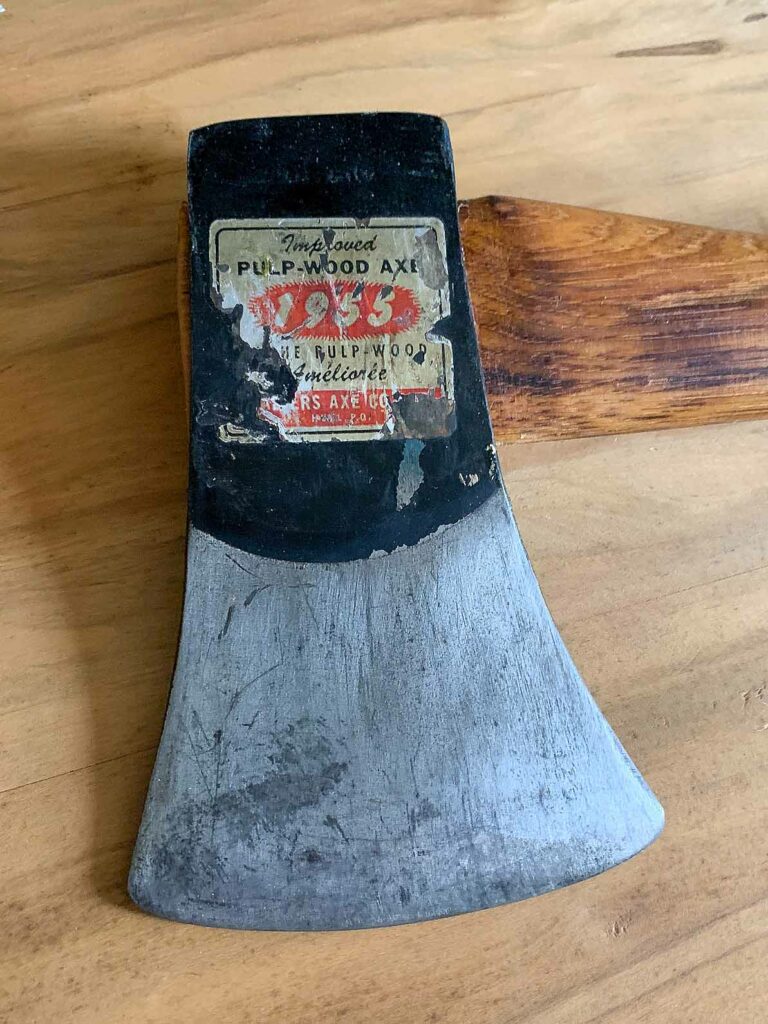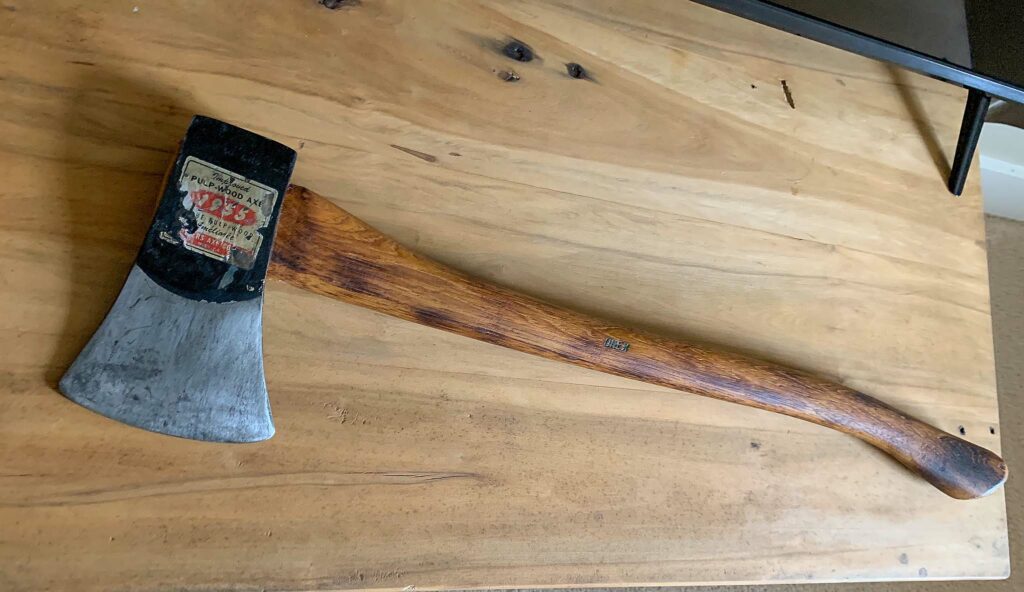Walter’s Pulpwood Axe
1940s – 1967
Hull, Quebec

Thanks to Tim (to_axeandknife) for the image
Walters Pulpwood Axes were a line of mid-sized axes with wide, thin blades for removing limbs and chopping through the smaller trees used for paper pulp production. While the exact dates are uncertain, the line is believed to have debuted in the 1940s and continued until Walters shut down in 1967.
These axes came fairly late in the timeline of major axe production, as the lumber industry had basically fully adopted chainsaws by this point. However, the ever-increasing need for paper pulp and the fact that an axe was still faster for dealing with smaller trees or limbing made this a natural focal point.
The trees used in the pulpwood have a straight trunk and a relatively small diameter (measuring 6-9” in diameter at chest height), so the axes needed were smaller than the full-size axes traditionally used in the lumber industry. The heads were typically 2.25 – 2.5 lbs on a 28″ handle, essentially making them a professional and “boy’s axe”.
The pattern most used was similar to a Yankee pattern but flared more at the toe to form a wider curved blade. Although, some were offered in a Montreal pattern (called the “tomahawk” pattern by Walters). Both had a thin blade profile.
Sadly, Walters relied heavily on paper labels and chose to only stamp “Walters” on all their axe lines (other than the famous Black Diamond). Therefore, identifying a pulpwood axe without a label requires a fair amount of examining the head for clues – and being comfortable guessing.
Walters Improved 1955 Pulpwood Axe

Thanks to Tim (to_axeandknife) for the image
In 1955, Walters introduced an improved version of their pulpwood axes with a slightly wider and thinner blade, enhancing their chopping efficiency for small trees. However, without labels, distinguishing between the original and improved versions is nearly impossible.
Walters Special “Our Best” Pulpwood Axe

The “Walters Special” Pulpwood axes also featured an “OUR BEST” sticker on the blade and were a more premium offering.
Example at Owens Axe & Handle
Help the site grow!
Did I get something wrong? Do you have one of these axes? Please share any pictures, information, or insights to help fill the archive. You can email: museum@axeandtool.com
